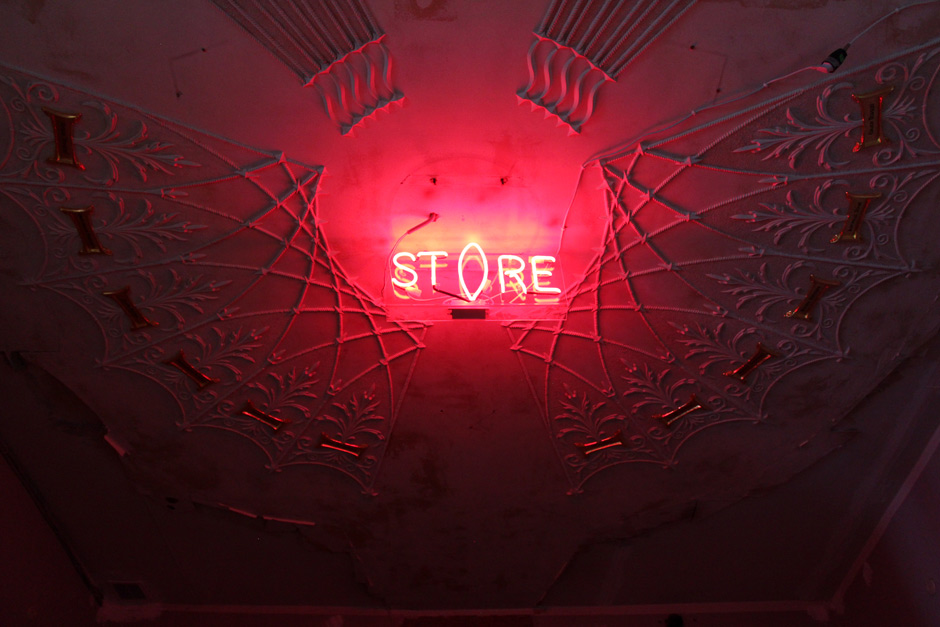ST()RE cycle:
ID: C3

Date:
Since 2010
Introduction:
A research cycle that tells the story of the hidden aspects of history in the context of public space. Working with hidden history and displaced memory, for which historically-saturated public places in different locations around the world are chosen. For each work of the cycle the image of a storefront (English store is similar in sound to history) is created, in or around which the fragments of the work are placed. Various strategies are used to create showcases in the cycle: showcases/ ballot boxes; a showcase/greenhouse that defends environmental protest; a showcase/spontaneous monument about state sacralization of censorship; a showcase/parasite that returns the historical layer to a decorative monument; a fair showcase that criticizes the commercialization of history; a showcase/laboratory that ironizes the phallogocentrism of science, and so on.
The images of transparency, glass/screen and showcase/window appear more than once in the cycle: the window-laboratory on a university campus in Stockholm, the window-scare reminding about victims, the screen for the blind, the "blind window" as a symbol of hidden history, etc. Also, as part of the cycle interventions in museums are created, where their own museum equipment is exhibited, decommissioned after prolonged use. The project is implemented in different cities, so far these are: Bialystok, Bishkek, Vilnius, Homiel, Dnepr, Krakow, Minsk, St. Petersburg, Stockholm, Tbilisi, Warsaw. The cycle is part of the project ST()RE where the image of a showcase becomes a transparent ballot box.
